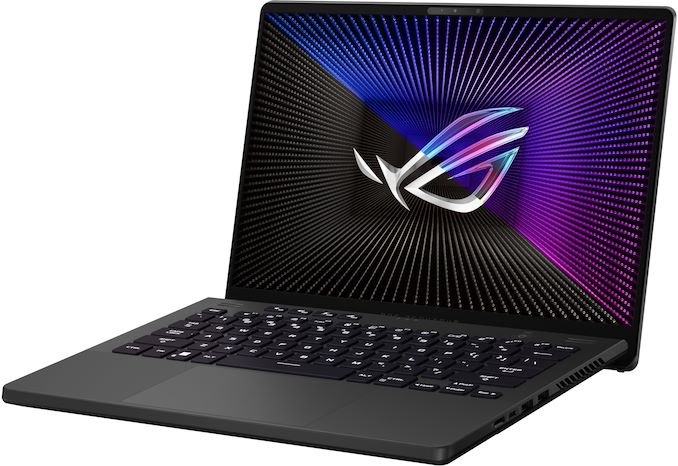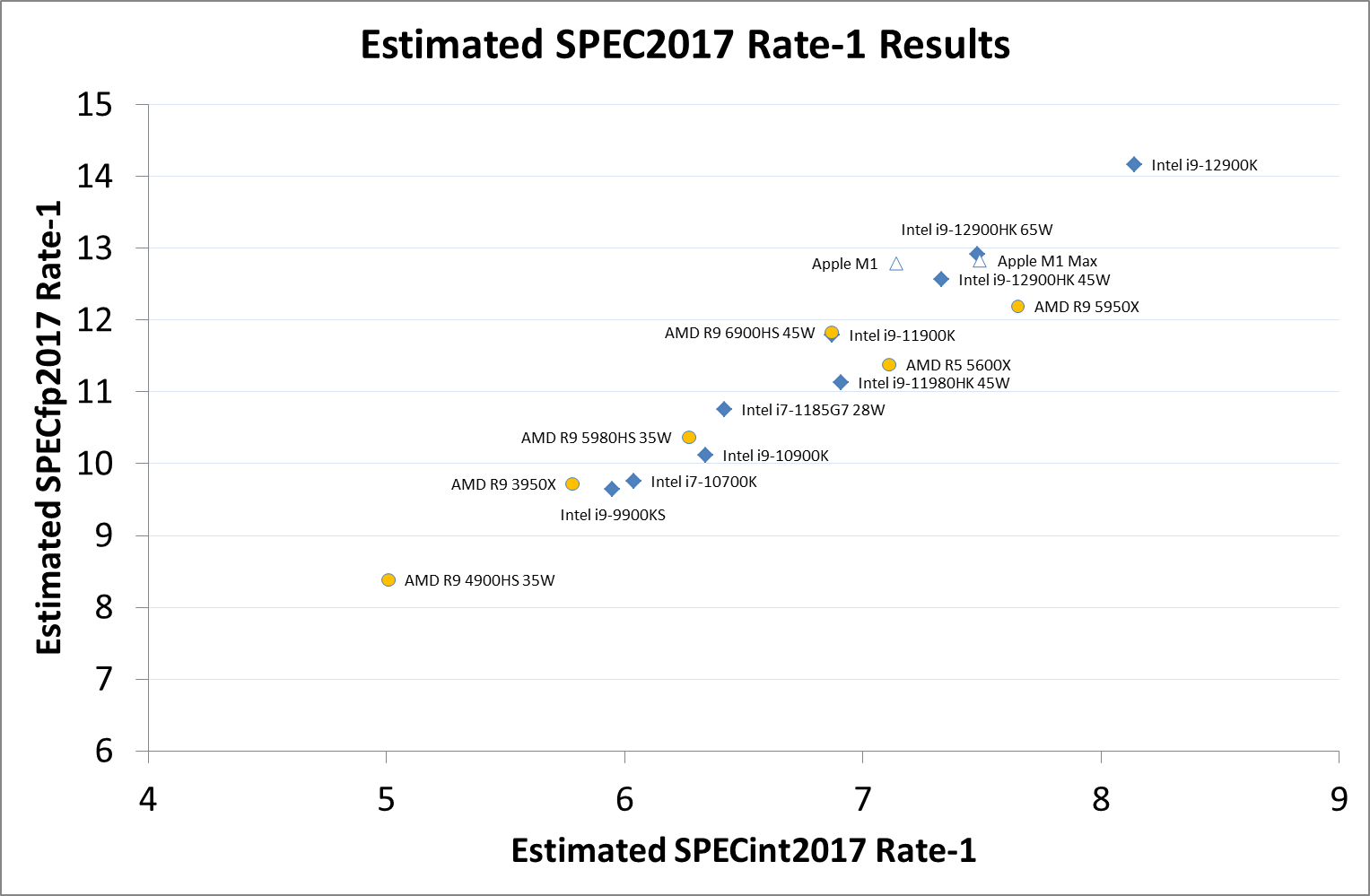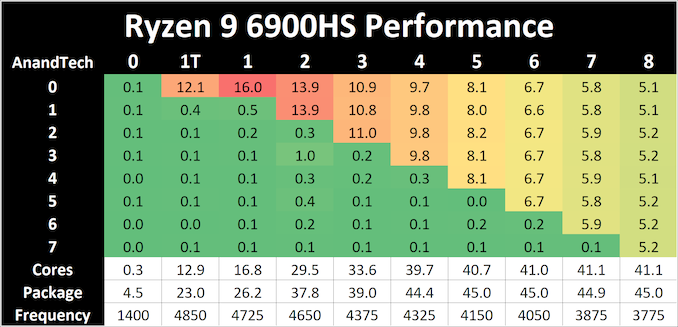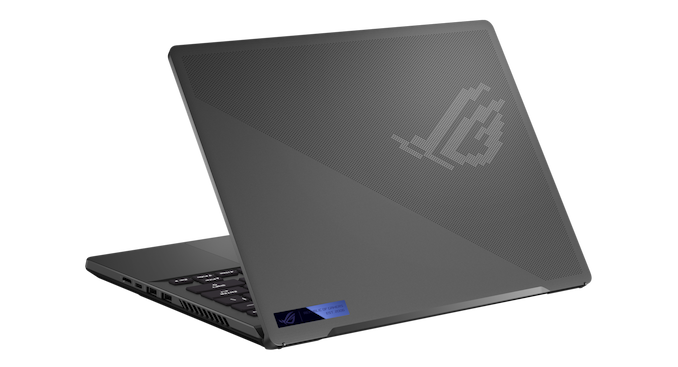AMD's Ryzen 9 6900HS Rembrandt Benchmarked: Zen3+ Power and Performance Scaling
by Dr. Ian Cutress on March 1, 2022 9:30 AM ESTConclusion
When AMD announced the new Ryzen 6000 Mobile series, codename Rembrandt, we saw a number of distinct upgrades over the previous generation: moving from TSMC 7nm to TSMC 6nm should provide a small efficiency boost, and then coupled with the move from DDR4 to DDR5 should greatly improve any memory-bound workloads. Instead of Vega graphics we now move to RDNA2 graphics, which should provide a much better gaming experience, coupled with that increased memory bandwidth. On top of that all, we were told about AMD’s 50+ updates to the SoC focused on power management, wake from sleep, and race to sleep. The one thing that we knew didn’t change was the CPU core: despite being called Zen3+, there is no difference in the microarchitecture compared to Zen3 – the reason why it gets a plus is due to the power management techniques, improved memory, and new manufacturing process.
But the fact of the matter is, CPU performance is more than just the microarchitecture and frequency. Beyond that, it’s the memory subsystem, which also contributes directly to IPC or performance per clock. This is why I’ve gone off iso-frequency testing for this sort of comparison, because each product is built with optimization points in mind, and moving simply the core frequency causes a different balance of resources compared to the ‘as built’ and ‘as sold’ metrics. This is why when we put Zen3+ up against Zen3 at a similar power level, we’re seeing a sizable uptick in performance.
In our industry standard SPEC tests, this translates to an +11.9% average increase for Zen3+ across integer and floating point in single threaded mode compared to Zen3. In multi-threaded mode at 35 W, this was a +10.4% for integer, but +32.4% for floating point. We saw a similar size jump in our multi-threaded floating point SPEC tests when Intel’s Alder Lake moved from DDR4 to DDR5, showcasing that there are key industry standard workloads for which DRAM memory bandwidth is still the limiting factor.
So while it’s a great move to see AMD jump into DDR5 with this new platform, the elephant in the room is still the performance against similar power hardware from Intel. Unfortunately we don’t have too many data points, as Brett in Canada tested the performance-focused 12900HK, and I’m the UK where I tested the efficiency-focused 6900HS, but suffice to say that in raw performance at least, comparing P cores to Zen3+ and multi-threaded workloads, Intel still has an advantage. Intel’s advantage increases when we increase the power, as it seemingly has more frequency to give, whereas AMD’s Rembrandt is already near peak all-core frequency at modest 35-45W power levels. This is showcasing one difference between the two manufacturing processes: AMD on TSMC N6, and Intel on Intel 7.
If we take something as simple as CineBench R20 (everyone’s favorite), the Intel CPU in 45 W mode scores 730, while the AMD CPU in 45 W mode scores 613, only matching Intel’s previous generation. That’s partly due to the single threaded power consumption on both platforms – while AMD is using 12.9 W on the cores (23 W package) to reach one thread at 4850 MHz, and doesn’t improve single thread performance in higher power modes, Intel does gets a performance uplift going from 45 W to 65 W, suggesting that the single thread power consumption is up in that region.
The same applies for multi-threading – in a lot of our benchmarks we see that AMD scores minor gains going from 35 W to 45 W to 65 W, indicating that the efficiency point is really around that 35 W metric. But when we scale that up to the multi-threaded tests, Intel can scale power for additional performance a lot more, but also wins as it has a total of 20 threads, compared to AMD’s sixteen. This means at the end of the day Intel can get +40% performance at the same power in benchmarks that can take advantage of its core structure, but only +14% in other tests (like SPEC) despite having +25% more cores.
While we haven’t touched battery life or graphics in this article, instead looking at CPU performance, we can see that realistically AMD is finding a good optimization point around that 35 W mark with this new Rembrandt chip. Pushing for more power gives minor performance uplifts, suggesting it isn’t really that scalable, but when we combine the new updated SoC with the move to DDR5, it’s still a great performer. In fact, both Intel and AMD chips seem to be amazing this generation, and if you’re in the market for a flagship, CPU performance is everywhere. But right now, Intel seems ahead at the high-end.
What’s going to be interesting here is testing the 15 W versions of the latest platforms. AMD still has 8 core processors, with all 8 cores being big cores, whereas Intel has moved down to 2 big cores paired with 8 efficient cores. We might see the tides shift the other direction allowing AMD to be more scalable, pushing 15 W or higher modes with more performance, while Intel relies on the efficient cores to pick up the rest of the workload. Ultimately this is where the battle really matters, as this is at the price points where most notebooks are going to be sold.
















92 Comments
View All Comments
web2dot0 - Wednesday, March 2, 2022 - link
PC fanbois would pretend M1 isn't in the convo.😆
They will just tell you that nobody cares about performance per watt... because they said so.
Qasar - Wednesday, March 2, 2022 - link
and the apple fanboys just keep talking about the m1 like its the best things since sliced bread, whats your point ?bottom line is this, IF you are already using the over priced apple eco system, then the m1 makes sense, if not, then there is no point to it. i only know 3 people that have either an ipad, or a mac based comp, the rest wont touch apple cause of the price, too expensive for what they would need it for, windows based products, suit their needs just fine.
schujj07 - Wednesday, March 2, 2022 - link
For sure Apple is way too expensive for what you get. Working in industry I hate it when I have to give support to someone using a Mac because the VPN we send them doesn't work. Of the hundreds of VPNs I have sent to people, less then 10 have responded to me saying they need the one for Mac. Mac just doesn't play as nicely with the things we use in a lot of IT.Obiwanbilly - Friday, March 4, 2022 - link
Oh, the VPN doesn’t work? I have an M1 MacBook Air and I use WireGuard for my VPN. It works perfect!Oh 🤔, do you mean “Legacy” VPNs, that are based on IPSEC or OpenVPN? You know, the one’s where Wikipedia says, “… are often complex to set up, disconnect easily (in the absence of further configuration), take substantial time to negotiate reconnections, may use outdated ciphers, and have relatively massive code bases of over 400,000 and 600,000 lines of code, respectively, which hinders debugging.“
That one? 👆😱
Hey bro, some of us Mac users are “Pros” too. Maybe you should stop using legacy VPN software and switch to something better? Instead of blaming Macs! 🤦♂️
Obiwanbill
BushLin - Friday, March 4, 2022 - link
Try connecting to your employer's VPN, chances are that it's not wireguard.Obiwanbilly - Friday, March 4, 2022 - link
Yep, it’s legacy. It needs to be upgraded. I can help, if you want. 😬I don’t know why you would continue to use OpenVPN or IPSec. I first used that tech like 14 yrs ago. Move on! 🤓
Go research the benefits of using WireGuard. It’s a waaaay better solution. Dropped connections on IPSec or Open VPN take FOREVER to reconnect. You don’t need licenses, you can support unlimited users. Your limitation is the hardware you choose to host your WireGuard Server endpoint. WireGuard supports Windows and Android endpoint client devices. Oh yeah, and Mac OS too. 🥳
ObiwanBilly
Dug - Friday, March 11, 2022 - link
Then you have an outdated or crappy vpn. Every industry standard has a mac client that works fine. Even Azure has a mac configuration for mac vpn.wolfesteinabhi - Wednesday, March 2, 2022 - link
it will be in convo when Apple starts selling Windows "PC" with M1 in it. till then its definitely not in Convo.tyger11 - Thursday, March 3, 2022 - link
OS X is enough to keep me away from that hardware, so it doesn't matter.GeoffreyA - Thursday, March 3, 2022 - link
Frieza's stronger than Goku right now---